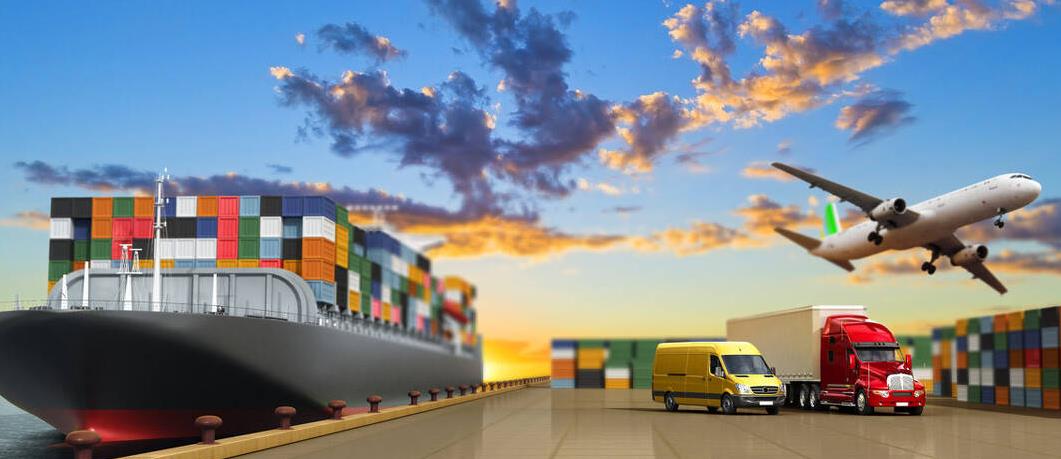NEWS
Comprehensive Guide to Mastering International Logistics in China
Release time:2024-01-23 17:23
This article is a comprehensive guide for business owners on international logistics in China. It covers the logistics channel selection, operational models, pricing strategies, documentation, and customs duties. It's designed to help businesses navigate China's complex logistics sector efficiently and effectively.

Selecting Channels for International Logistics Companies
When choosing a logistics channel for international shipping from China, several criteria are crucial:
Reliability: Consistency in delivery times and safety of goods.
Cost: Comparing the cost-effectiveness of different shipping methods.
Speed: Transit times can vary significantly between channels.
Capacity and Accessibility: Some goods may require specific transportation conditions or have size limitations.
Comparison of Different Channels
Different logistics channels offer unique advantages and limitations:
Sea Freight: The most common mode for international shipping, sea freight is cost-effective for large volumes but slower.
Air Freight: Faster but more expensive, ideal for high-value or perishable goods.
Rail Freight: A growing option for Europe-bound cargo, offering a balance between cost and speed.
Road Freight: Used primarily for short distances or in combination with other modes.
Case Studies or Examples
Belt and Road Initiative: This project has expanded rail and road connectivity, providing new logistics options.
Tech-Driven Solutions: Companies like Alibaba have revolutionized logistics with digital platforms, offering integrated solutions across different transportation modes.
The Operation Model of International Logistics Companies
International logistics companies in China operate on various models, each catering to different aspects of the supply chain. Common models include:
Freight Forwarding: Acting as intermediaries, they manage the logistics of shipping goods, without owning transport assets.
3PL (Third-Party Logistics): These providers offer integrated services like transportation, warehousing, and distribution.
4PL (Fourth-Party Logistics): They provide more comprehensive management, overseeing the entire supply chain.
The logistics sector in China is rapidly embracing innovations:
Digital Tracking Systems: Advanced tracking for real-time updates on cargo.
Automation in Warehousing: Use of robots and AI for efficient warehousing operations.
Sustainable Practices: Increased focus on reducing carbon footprint in logistics.
Client Interaction and Service Models
Customer service models in logistics are evolving:
Customized Solutions: Tailoring services to specific client needs.
Digital Platforms: Easy online booking and management of shipments.
Customer Support: Enhanced support services for international clients.
Pricing of International Logistics Companies
The cost of international logistics services from China is influenced by several key factors:
Distance and Route: Longer distances and complex routes increase costs.
Volume and Weight: The size and weight of shipments play a crucial role in determining price.
Type of Goods: Special goods like hazardous materials or perishables may require special handling, affecting the price.
Mode of Transportation: Different modes (air, sea, rail) have varying cost implications.
Comparison of Pricing Models
International logistics companies typically offer various pricing models:
Per Unit Pricing: Charges based on the number of containers or pallets.
Weight-Based Pricing: Common for air freight, where charges are based on weight.
Value-Based Pricing: For high-value goods requiring special handling or insurance.
Tips for Cost Optimization
Businesses can reduce logistics costs through:
Comparative Analysis: Evaluating different logistics providers for the best rates.
Consolidation: Combining shipments to optimize container space.
Flexible Timing: Adjusting shipping schedules to avoid peak rates.
Preparing Import and Export Documents
The documentation process is critical in international logistics. Key documents include:
Commercial Invoice: Lists the goods in the shipment and their value.
Packing List: Details the contents, weight, and dimensions of the cargo.
Bill of Lading: A contract between the owner of the goods and the carrier.
Certificate of Origin: Declares the country where the goods were manufactured.
Compliance and Regulatory Considerations
Compliance with international trade regulations is essential:
Customs Regulations: Familiarity with the customs rules of both China and the destination country.
Safety and Environmental Standards: Adherence to international safety and environmental regulations.
Trade Agreements: Leveraging benefits from trade agreements between China and other countries.
Paying Customs Duties
Understanding Customs Duties and Taxes
Customs duties are a significant aspect of international trade. They are levied by countries on imported goods to protect local industries and generate revenue. The amount varies depending on the type of goods, their value, and the specific regulations of the importing country.
Calculation Methods
Customs duties are typically calculated based on:
Tariff: A percentage of the item's total value.
Specific Tariff: A specific amount charged per unit of goods.
Compound Tariff: A combination of both ad valorem and specific tariffs.
Processes for Payment and Compliance
Complying with customs regulations and ensuring timely payment of duties is vital:
Engage a Customs Broker: Professionals who can navigate the complexities of customs regulations.
Automated Systems: Utilizing automated systems for customs declarations and payments.
Stay Informed: Keeping abreast of changes in tariff rates and regulations in both exporting and importing countries.
Conclusion
In this guide, we've explored the dynamic and intricate world of international logistics in China, a crucial hub in global trade. From the vast network of logistics channels to the innovative operational models, China's logistics sector is both complex and efficient, catering to a wide range of international shipping needs.

 Free Quote
Free Quote





